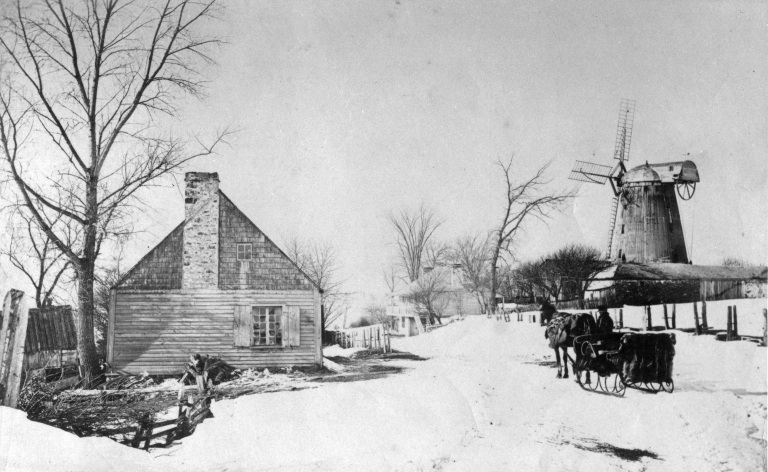From the time that William Fleming started to use his mill to grind wheat in order to convert it into flour, Jean-Henri-Auguste Roux, the superior of the Sulpician Fathers who were then seigneurs of the island of Montréal, provoked a legal battle against the miller, claiming that the seigneur of the island of Montréal was the only one to have the banality right allowing it to operate the mills to produce flour. This legal battle would eventually stand out in our economic history!
The lawyers for the Séminaire de Saint-Sulpice de Montréal therefore called for demolition of the mill and compensation of 1000 pounds for the loss of miller's fees. The trial began on June 28, 1816 in the Court of King's Bench.
From the very outset, Fleming's lawyers contested the seigneurial legitimacy of the Sulpicians, and particularly, its demand to exercise the banality right. They argued that the Sulpicians had no legal existence as a corporation or other legal entity. The lawyers claimed that the Sulpicians' only rights came from the Séminaire de Saint-Sulpice de Paris, a legal entity that no longer had any jurisdiction in Canada.
On April 16, 1819, a decision by the Legislative Council no longer recognized the legal existence and rights of the Séminaire de Saint-Sulpice de Montréal. According to the Séminaire's lawyers, however, these rights had been confirmed since 1677 by King Louis XIV, rights that were normalized by the Treaty of Paris of 1763, legitimizing the existence of the religious community under the British regime. On April 18, 1821, Judge Reid of the Court of King's Bench dismissed as peremptory the exceptions raised by Fleming's defence.
On June 20, 1822, the Court ruled that the Séminaire's position was well-founded and gave orders to demolish Fleming Mill, which it said had operated in violation of the banality right. Fleming was therefore supposed to destroy his millstones the following month. Fleming, however, backed by English-speaking businessmen, didn't see it that way, and so he appealed the decision. From 1822 to 1825, the eight judges of the Court of Appeal heard the case. Their findings were puzzling, as the Court was divided at the time of handing down the verdict: four of these judges sided with Fleming's argument and four supported the Sulpicians' point of view.
This deadlock in fact became a victory for Fleming, as the Séminaire ended up with no court ruling against the miller.
In 1827, Fleming reached an agreement with mason William Morrisson to build a 5-storey, 50-foot-high stone house with foundations and a number of openings, for an amount of 220 pounds sterling. In the contract between the two parties, the word "windmill" was nowhere to be found. Fleming wanted to remain very discreet.

